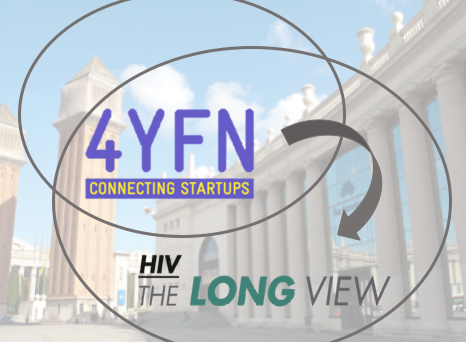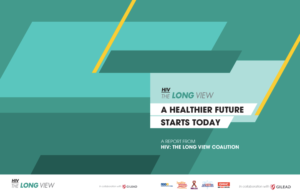
Four years from now? It’s March 2021 and the pain in my thumbs is gone – I no longer need to physically type anything. The dictation function on my phone and watch works perfectly and there is no risk of accidentally insulting someone or looking stupid when autocorrect gets it wrong.
Long-acting antiretroviral therapy is the norm and the world can now focus on quality of life for people living with HIV as the vast majority are on treatment. And in line with the World Health Organization’s strategy for eliminating viral hepatitis, hepatitis C has now been eliminated among people living with HIV – a powerful proof-of-concept for the thousands of diverse hepatitis micro-elimination programmes underway in all countries.
But that is 4 years from now, and hopefully this is not just wishful thinking; today it’s just another sunny day in Barcelona, and I am in the backseat of a car that just drove past the 4YFN conference. 4YFN is the business platform of Mobile World Capital Barcelona (MWCapital) that enables start-ups, investors, corporations and public institutions to discover, create and launch new ventures together. And health, well digital health at least, is solidly on the agenda at the European Connected Health Alliance’s “Digital Health & Wellness Summit 2017”, as part of 4YFN 2017. I, of course, am looking through the programme for HIV and/or hepatitis, but am coming up short.

With nothing in particular captivating me in the day’s schedule, my thoughts turn to HIV: The Long View, a forward-looking health report we developed last year to drive discussion and action on the long-term needs of people living with, and at risk for, HIV. Our starting point was that the healthcare environment is evolving rapidly, and these changes have extraordinary implications for millions, if not billions, of people. In the report we look explicitly at the implications that projected healthcare trends have for HIV care and management in the future in Western Europe and beyond.
By comparing and contrasting the futures of the general population with those of the HIV population, the Long View report seeks to outline the actions needed today to prepare for a healthier future for people living with, and at risk of, HIV. The cornerstone of the report, a forecast for healthcare trends, was built on a unique mix of research and data, including a survey of 10,000 Europeans, which found that over the next two decades, 53% believe that healthcare professionals will be available to people through technology, for example making virtual house calls instead of having to visit in person.
My vision for HIV – and perhaps not in the next 4 years, but certainly within 2 decades – is that clinical care quality will be equalized at the highest level.
That figure seems surprisingly low to me and I think the tech-savvy folk at 4YFN would be surprised too. My vision for HIV – and perhaps not in the next 4 years, but certainly within 2 decades – is that clinical care quality will be equalized at the highest level. Through satellites and cables, the world’s poorest will be able to receive care from the world’s best healthcare professionals, who will provide their services from their offices, wherever they sit in the world. I envision the rise of nurses and support staff who will be on the frontlines of virtual care as well as a revitalised UNAIDS that will coordinate efforts with the Gates Foundation, the Global Fund and others to provide the needed resources.
Driven by innovation, like the hundreds of examples being showcased at MWCapital, HIV will be clinically managed be a global network of experts, and socially managed at the local level. This will quickly become a transferable solution, with other health conditions following suit, especially where specialist care is lacking, and expensive equipment is not needed.
Driven by innovation, like the hundreds of examples being showcased at MWCapital, HIV will be clinically managed be a global network of experts, and socially managed at the local level.
Our car turns another corner and Fira Montjuïc, where the 4YFN conference is held, disappears from sight. I’m left thinking about how we in infectious disease prevention and control can actively engage with the innovators at this conference and beyond, and accelerate progress towards ending HIV once and for all.
One thing I am sure of: ‘4 years from now’ we will look back and wonder how joining our efforts in HIV expertise and innovation took us so long…
Comments